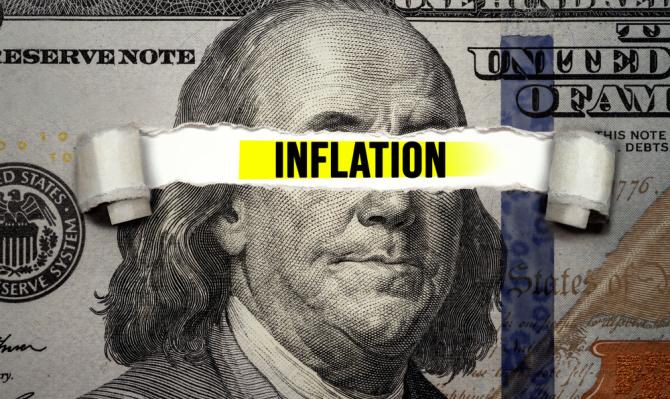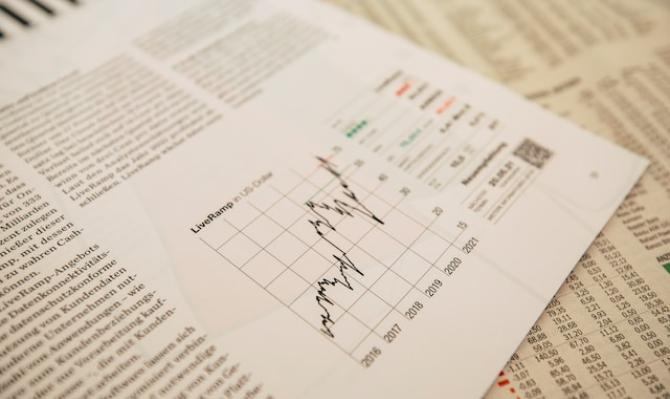Will inflation trigger new turbulences in the financial markets?
One of the main topics of discussion in this current phase of economic recovery is, without a doubt, inflation. In 2021, it has reached levels not witnessed since 2008 in the US, while in the euro area it is likely to reach levels not seen since 2012, fuelling risks of inflationary pressures. In fact, the latest inflation data have been notably higher than anticipated, especially in the US. In this context, we wonder to what extent these surprises have had a significant impact on the financial markets.

Historically, inflation surprises are related to significant movements in the financial markets. The main channel through which this occurs is inflation expectations. One way to illustrate this relationship is by looking at what happens to inflation swaps on the days when inflation data is released in the US and Germany.1 In the second chart we can see the sensitivity of this financial product to the difference between the figure published and what was expected by the consensus, in this case Bloomberg, and we see that the relationship is positive over the period analysed. In the case of US swaps, for instance, a coefficient of 20 indicates that a 1-pp difference between the published and expected inflation rates tends to lead to a 20-bp increase in the 2-year inflation swap (which can be understood as the expected average inflation over the next two years).
- 1. We will use swaps linked to 2-year inflation. For 5-year 5-year inflation swaps, the results are very similar. Germany’s preliminary inflation data is published a day or two before that of the euro area and anticipates the movements in the European financial markets


Other financial assets that are sensitive to inflation surprises are sovereign bonds, since we would expect their yields to rise when inflation rates are higher than expected, anticipating a more aggressive monetary-policy response or reflecting higher expected inflation. However, if we perform a similar exercise to that above, but this time using yields on the 10-year sovereign debt of Germany and the US, we see how over the period analysed the relationship is not as strong as it is in the case of swaps. Even so, the sensitivity in recent years has been positive.
Finally, our exercise finds no significant relationship between inflation surprises and the German DAX and the S&P 500 stock indices (at least on the day the inflation data is published). This result could be due to the fact that higher or lower than expected inflation rates can affect the stock market either positively or negatively, depending on the current economic situation.2 For example, higher than expected inflation rates in a context of economic recovery could be interpreted by the markets as a positive sign as it could represent greater buoyancy in economic activity, which in turn leads to higher corporate dividends. However, in a more buoyant phase of the cycle it could generate fears of overheating, making investment in equities less attractive.3
This year, if we look at the price fluctuations that have occurred in the financial markets on the days when inflation data for Europe and the US have been published, with inflation rates being notably higher than expected, we see that they have been relatively moderate. This has been helped by the communication from the major central banks, namely the ECB and the US Federal Reserve.
In the case of the euro area, it became clear from January that inflation would be high for temporary reasons (base effects, especially in the energy component, and supply bottlenecks), and the ECB was quick to announce that it would not alter its monetary policy stance.

In the US, meanwhile, the story has some nuances. Although inflation in 2021 was expected to be higher than in the euro area, the levels that both headline and core inflation are reaching (above 5% and 4%, respectively) have fuelled fears of overheating of the economy, especially since economic activity there has already exceeded pre-pandemic levels. At certain moments of the year, financial asset prices began to capture this scenario (for instance, between January and March the yield on 10-year sovereign debt surged by over 80 bps to reach 1.75%). However, this sensitivity of the markets to the risk of overheating moderated during the course of Q2, and asset prices now suggest a scenario in which the inflation rally ends up being only transitory. Thus, investors have changed their response to inflation surprises as the year has gone on. While the markets were sensitive to the initial data which reflected a rebound in inflation, in the following months this sensitivity moderated and investors converged on the Fed’s view that the spike in prices is temporary. The last chart illustrates this change, as we see the daily change registered in the yield on 10-year treasuries on the three days when inflation data were published during Q2, with inflation being 0.6, 0.3 and 0.5 pps higher than expected, respectively. As can be seen, when the inflation data was published, the yield rose as expected. However, whereas the surprise in May led to an interest rate rally that gained intensity throughout the session, in June and July the initial movement was quickly undone.

In 2021 to date, inflation in the US and the euro area have been unusually high. However, we have seen that the sensitivity of financial asset prices to these inflation surprises has not been exceptional, especially when investors were satisfied with the idea that the spike in prices is largely due to transitory factors. Over the coming quarters we will see whether we are indeed right and inflation returns to more contained levels or whether, on the contrary, inflationary pressures end up being persistent and the sensitivity of the financial markets is heightened.
- 1. We will use swaps linked to 2-year inflation. For 5-year 5-year inflation swaps, the results are very similar. Germany’s preliminary inflation data is published a day or two before that of the euro area and anticipates the movements in the European financial markets
- 2. See J. Knif et al. (2008). «Stock market reaction to good and bad inflation news». Journal of Financial Research, 31(2), 141-166.
- 3. See «Does the potential rise in long-term yields pose a risk to equities?» in the MR07/2021.



